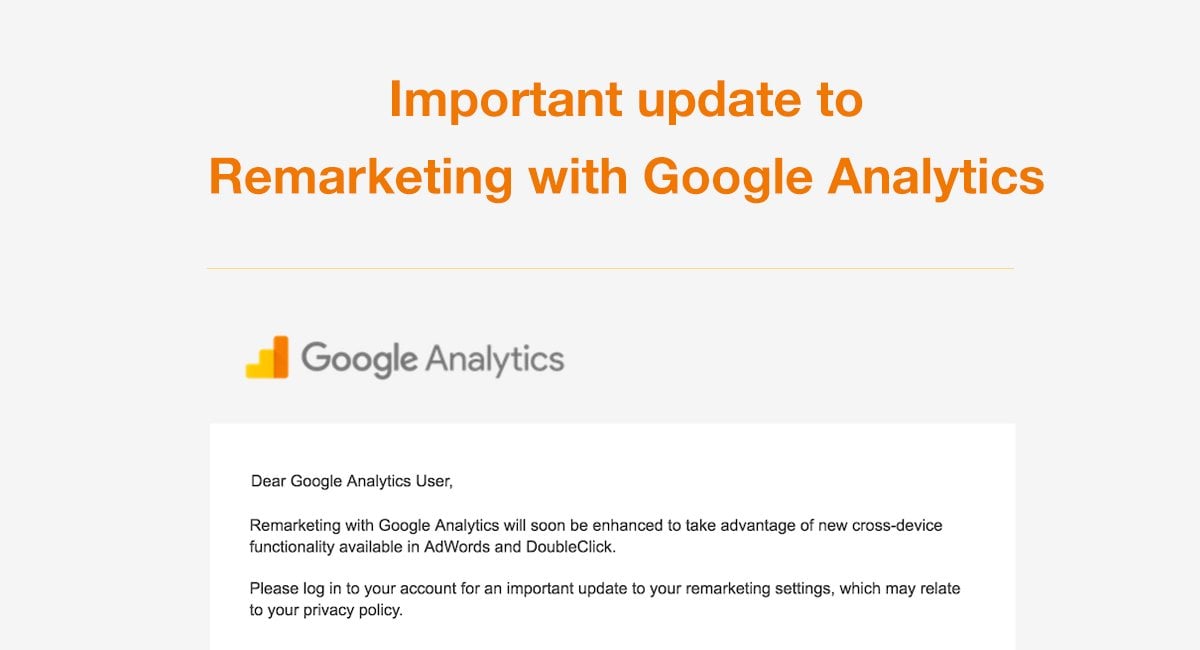Utilizing Remarketing in Google Analytics: A Comprehensive Guide
Utilizing remarketing in Google Analytics provides businesses a calculated side in getting to out to prospective customers. This overview will drop light on the vital steps included in utilizing the complete possibility of remarketing in Google Analytics, leading to boosted marketing results.
Understanding Remarketing in Google Analytics
Remarketing in Google Analytics permits companies to purposefully target individuals who have actually previously interacted with their internet site or mobile app. By leveraging data from Google Analytics, organizations can create customized remarketing listings based upon individual actions, such as web pages seen, activities taken, or certain goals achieved. This effective tool enables services to re-engage with users who have shown rate of interest in their solutions or items, eventually enhancing the chance of conversion.
Comprehending the various sorts of remarketing approaches is vital for an effective campaign - What Is “Remarketing” In Google Analytics?. Google Analytics supplies different options, including basic remarketing, dynamic remarketing, and remarketing checklists for search advertisements (RLSA) Each type offers a special function and can be tailored to satisfy certain advertising and marketing purposes
Moreover, analyzing the performance of remarketing projects is necessary for optimizing outcomes. Google Analytics provides beneficial understandings into the performance of various remarketing techniques, enabling services to make data-driven choices and fine-tune their targeting strategy. By constantly changing and monitoring remarketing efforts based upon analytics data, businesses can optimize ROI and drive success in their advertising and marketing efforts.
Setting Up Remarketing Campaigns

After establishing up target market listings, the following action is to connect Google Analytics with Google Advertisements. By linking these two systems, services can seamlessly transfer target market lists from Google Analytics to Google Ads for remarketing objectives. This combination permits even more precise targeting and better project performance.
As soon as the accounts are connected, companies can create remarketing projects in Google Ads making use of the target market details formerly specified in Google Analytics. These campaigns can be customized with certain ad creatives, messaging, and bidding methods to effectively re-engage with past visitors and drive conversions. By complying with these actions, organizations can take advantage of the power of remarketing to improve their advertising efforts and enhance ROI.
Utilizing Audience Segmentation Techniques

Predefined segments in Google Analytics allow you to swiftly analyze typical audience groups useful source like new customers, returning individuals, or customers that finished a particular goal on your internet site. Custom segments, on the other hand, enable you to produce one-of-a-kind segments based on certain criteria that are important to your company purposes. Dynamic remarketing listings immediately adjust based on user habits, revealing tailored ads to customers that have actually engaged with your site in specific ways.
Studying Remarketing Efficiency Metrics
Upon assessing the efficiency of remarketing campaigns in Google Analytics, the evaluation of crucial performance metrics gives valuable understandings into audience interaction and conversion prices. By diving into metrics such as click-through prices (CTR), conversion prices, cost per purchase (CERTIFIED PUBLIC ACCOUNTANT), and return on ad invest (ROAS), marketers can evaluate the success of their remarketing efforts. Evaluating these metrics enables marketing professionals to optimize projects, refine audience targeting, and assign budget plans properly to enhance total remarketing performance.
Maximizing Remarketing Approaches
When refining remarketing approaches in Google Analytics, focusing on target market division is critical for attaining project success. By dividing your target market into particular sections based upon their behavior, demographics, or interests, you can tailor your advertisements better to every team. This targeted strategy raises the likelihood of involving users that have actually already shown passion in your services or items, bring about greater conversion prices.
Another important facet of enhancing remarketing strategies is constantly testing and refining your projects (What Is “Remarketing” check it out In Google Analytics?). A/B testing various advertisement creatives, messaging, or offers can aid you determine what resonates finest with your target market and drives one of the most conversions. By examining the performance of these examinations in Google Analytics, you can make data-driven decisions to optimize your remarketing initiatives even more
In addition, leveraging vibrant remarketing can considerably improve your campaign results. This function allows you to reveal tailored advertisements to users based upon their past communications with your web site, showcasing services or items they have previously seen. By delivering customized content to individuals based on their passions and actions, vibrant remarketing can help boost interaction and drive conversions.
Conclusion
To conclude, using remarketing in Google Analytics is a calculated method to target users who have formerly engaged with a web site. By developing customized audience listings and utilizing audience division strategies, businesses can enhance remarketing projects for increased conversion rates. Examining performance metrics and continually maximizing strategies are critical for maximizing the performance of remarketing efforts.
Google Analytics provides numerous options, consisting of conventional remarketing, vibrant remarketing, and remarketing listings for search ads (RLSA)After setting up audience listings, the next step is to link Google Analytics with Google Ads. By connecting these 2 systems, my response services can flawlessly move audience listings from Google Analytics to Google Ads for remarketing objectives.Once the accounts are linked, services can develop remarketing projects in Google Ads utilizing the audience details formerly defined in Google Analytics.When refining remarketing approaches in Google Analytics, concentrating on audience segmentation is vital for accomplishing campaign success.